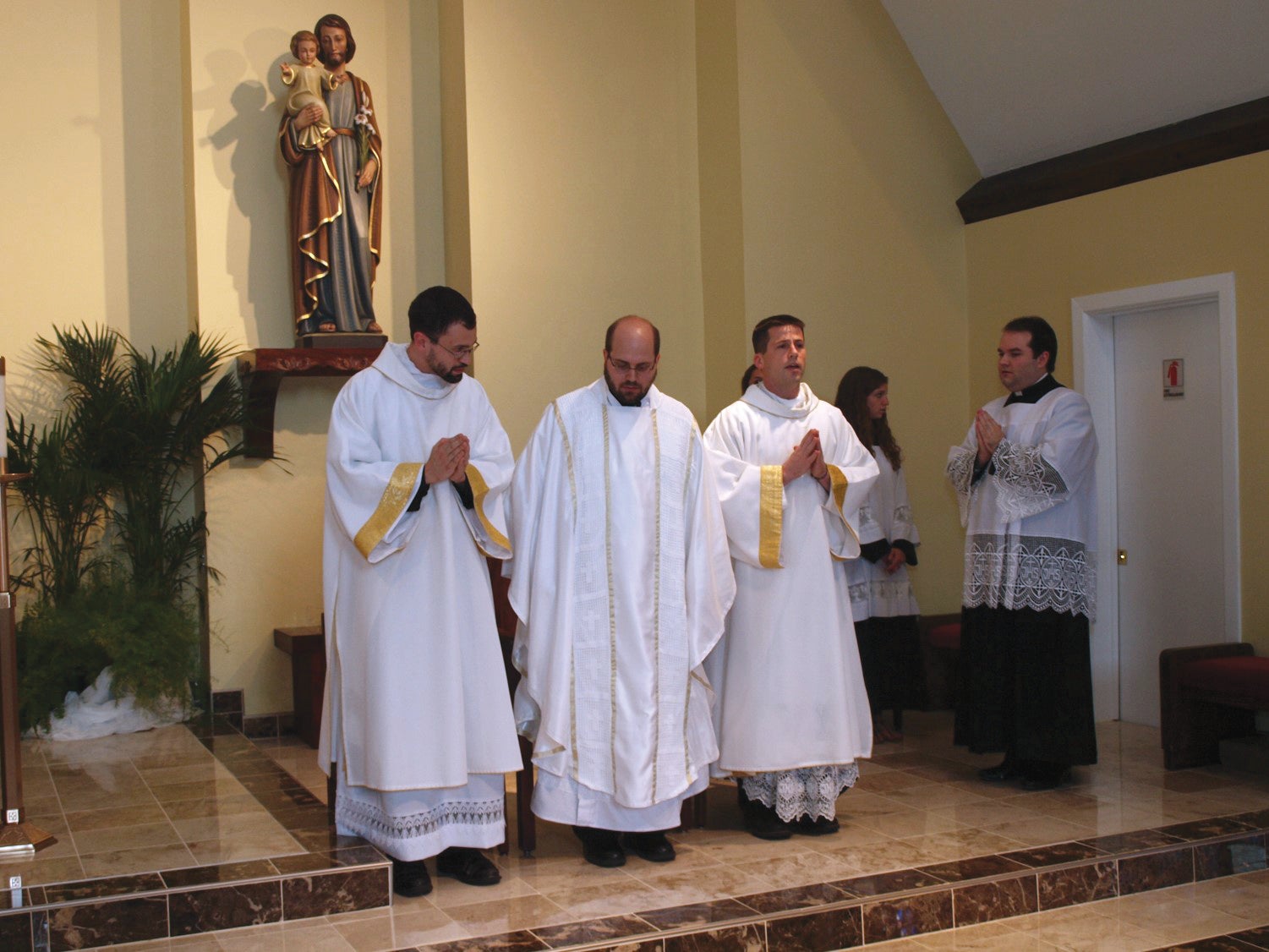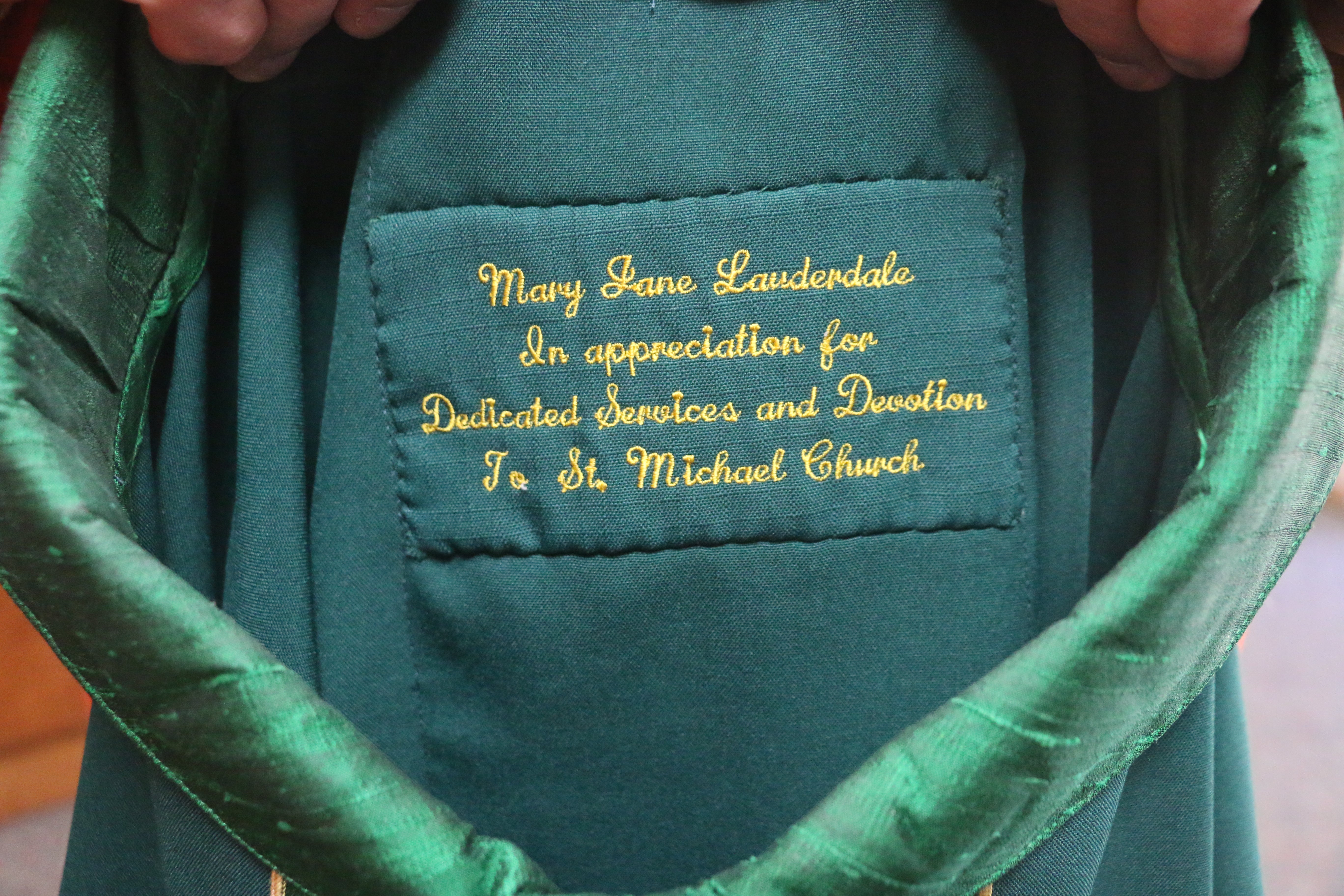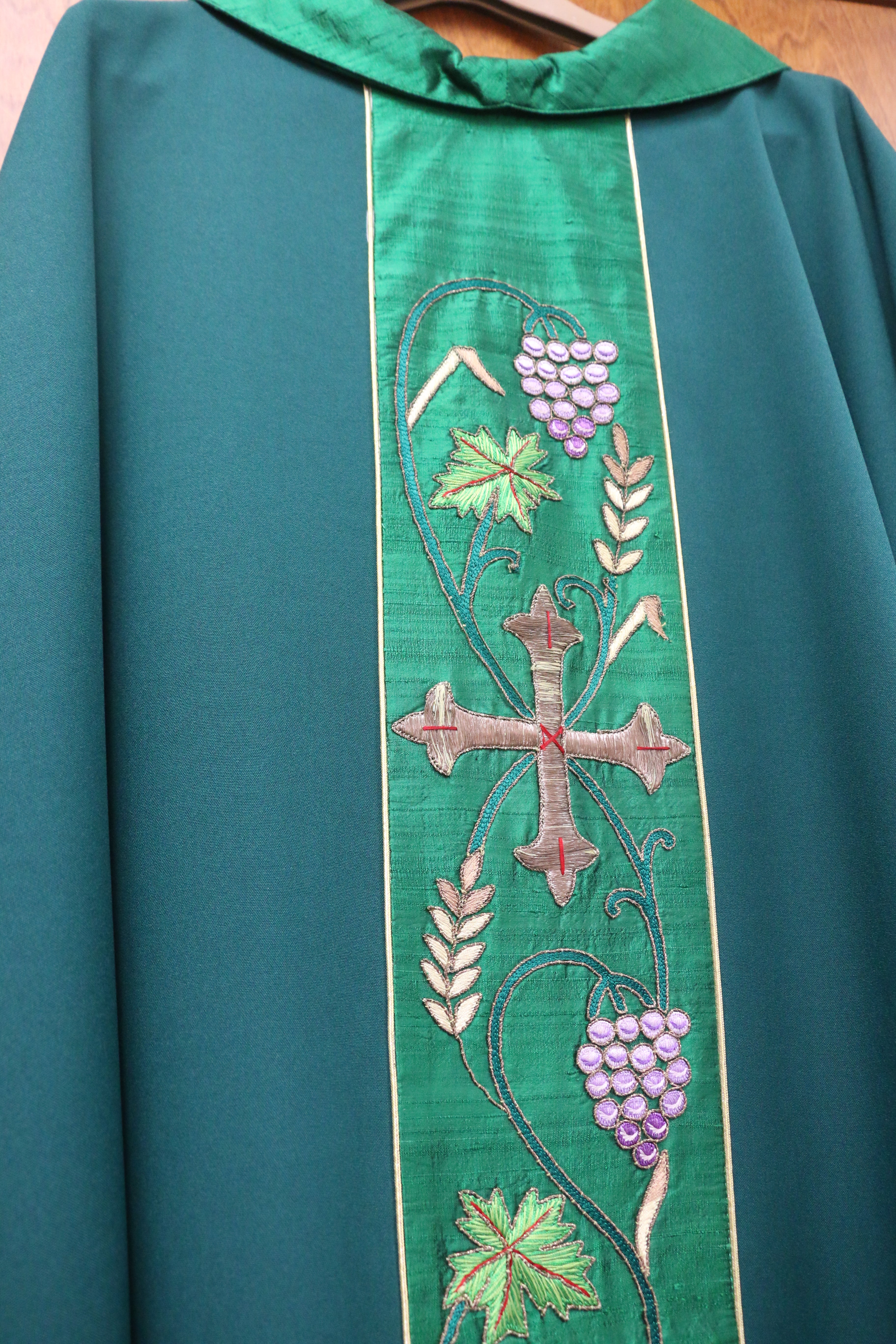Colors of the Season: Clergy’s vestments serve as symbols of faith
Published 1:59 pm Monday, March 21, 2022
It’s a tradition that goes back to the origins of the Roman Catholic Church.
The vestments priests wear during Mass and other sacred events are more than just a colorful accent to the rites. They are the indication that the individual wearing the garments is Christ’s minister on earth.
“Since the earliest days of the Church, liturgical vestments have been worn by priests for the celebration of the Mass,” according to the website Catholic Straight Answers. “Even though priests of the Old Testament wore vestments in their liturgical rites, the ‘Christian’ vestments are not really adaptations of them; rather, the vestments of the Christians developed from the dress of the Greco-Roman world, including the religious culture.”
After the legalization of Christianity in 313 A.D, according to the website, the Church continued to refine “who wore what, when and how” until about the year 800, when liturgical norms for vesting were basically standardized and would remain so until the renewal following the Second Vatican Council.
Other Christian religions have their own traditions that include the wearing of a stole — a long cloth about 4 inches wide that may include religious symbols. Priests in the Episcopal Church wear vestments similar to the Catholic vestments.
There are four basic colors worn by priests in the Catholic Church: green, white, red and purple.
The green stands for ordinary time, which is a period of growth. Ordinary time, according to the website catechist.com, is divided into two time periods. The first period comes following the baptism of Jesus and continues until Ash Wednesday. The second period begins on Pentecost Sunday. It is the longest liturgical season, and it continues until Advent.
“White is a reflection of the person of Christ and the purity of Christ,” said the Rev. Rusty Vincent, pastor of St. Paul Catholic Church.
White is worn on the feast days of saints and worn during the Christmas and Easter seasons to represent Christ as the light; Christ as the source of creation.
“The general sense of the white garment is because Christ has washed our sins away, so it’s to represent that purity and holiness in our life,” Vincent said.
The white garment is also worn for funerals to represent the start of an individual’s new spiritual life.
Red is generally worn for the feast of the Holy Spirit because the Holy Spirit is depicted in the Bible in the Acts of the Apostle as the fire — the fire that burns in the Holy Spirit.
Red is also worn on the feast days of martyrs to represent the blood they lost for the sake of Christ. The only other time it’s worn is Good Friday, because Christ is the ultimate martyr.
Purple is worn during the seasons of Lent and Advent because purple is the color of penance and preparation.
The Rev. Robert Dore, the pastor of St. Michael Catholic Church, said he wears two different shades of purple.
One purple vestment, he said, “Is more the color of eggplant. I wear it during Lent because it’s darker and more for penance. The other (purple garment) has more blue for Advent because it represents the time before the sun comes up. We’re waiting on the light and in Advent, we’re waiting on the Light of the World to come.”
Other colors used include a rose-colored vestment and black.
The rose-colored vestment is worn twice during the church year for the third Sunday of Advent and the fourth Sunday of Lent.
“Those are breaks in those seasons to represent the joy of what we’re about to experience,” Vincent said. “For Advent, it’s the birth of the Lord and in Lent anticipation of the resurrection; a reminder of the hope of what’s to come.”
Vincent said black can be worn for All Souls Day and funerals.
“The Pascal mystery is focused on Christ’s passion death and resurrection,” he said. “Red would represent his passion, so we wear that on Good Friday. Black represents his death, which is what we wear for funerals and white represents his resurrection, which is what we wear for Easter.
One of the gospels, Vincent said, refers to Jesus mourning for his friend, Lazarus.
“So I like to wear black for funerals to show that I’m entering into the mourning of the family, as Christ would enter the mourning of anyone who lost a loved one.”
The colored vestment people see during Mass is called a chasuble and is one of four vestments priests wear for mass. Three are put on before the chasuble.
The first is the alb, a long white garment that flows from shoulders to ankles, and has long sleeves extending to the wrists. Its spiritual purpose reminds the priest of his baptism. Next is the cincture, a long thick cord with tassels at the ends that secures the alb around the waist as a symbol of the priest’s celibacy.
The stole, which is the symbol of the priest’s office, follows before the priest dons the chasuble.
Most churches have a set of vestments available for priests, but many priests prefer to have their own vestments.
Vincent’s personal vestments were made by a company in Poland. And while he uses the church’s vestments, he said he wears his personal vestments for Sunday Mass.
He also has a special vestment made by his mother.
“She made my white vestment for my first Mass out of her wedding dress,” he said. “It was a surprise for me; she didn’t tell me about it until after she did it. The wedding dress was kind of stripped down the middle and the side sleeves are crocheted.”
Dore said friends sewed many of his personal vestments. Like Vincent, one of those has a special meaning; a former pastor made it.
“His name was Father John Niemeyer,” he said. “He was one of my childhood pastors. I grew up and went my way and went off to the seminary, and we reconnected and we’ve stayed in touch ever since. He was at my ordination.
“He was in the seminary; he was a tailor. He used to make the cassocks, so he was very particular.”
A white vestment was made by a parishioner, Tricia Sadler.
“She does a lot of our banners and hangings,” Dore said. “She made it for me for Christmas.”
A gold vestment was made by Cathy Baker, who was a parishioner when Dore was in Columbus, Miss.
Another vestment Dore wears was donated to the church in memory of Mary Jane Lauderdale, the mother of Jane Flowers, who was very active in St. Michael Parish.
Dore said he prefers to wear white for funerals.
“White is the sign of Baptism and the resurrection,” he said. “We’re marking someone’s entry into eternal life; it’s more a sign of comfort than mourning.”
In all, according to Catholic Straight Answers, the vestments used at Mass have a two-fold purpose according to the General Instruction on the Roman Missal, No. 335: “These should therefore symbolize the function of each ministry. But at the same time, the vestments should also contribute to the beauty of the rite.”
Moreover, the vestments inspire the priest and all of the faithful to meditate on their rich symbolism.













